Best Dessert Wine Types in the World
Vinsanto is a dessert wine hailing from Santorini. It is made with sun-dried Assyrtiko and Aidani grapes. Despite a surprisingly similar name, this Greek wine does not have much in common with the more famous Vin Santo from Tuscany. The grapes are sun-dried for approximately fourteen days and are then fermented and aged.
This wine has to be oak-aged for a minimum of two years, but most producers opt for longer maturation. The result is a sweet and dense wine packed with flavor and rich in aromas. Although both grape varieties are white-skinned, Vinsanto will attain a luscious golden color that tends to turn into darker amber hues as the wine ages.
Malagousia is an ancient, white-skinned Greek grape that was saved from extinction by Vangelis Gerovassiliou, who brought it back from obscurity in the 1970s. The grape produces aromatic dry wines, which are usually of excellent quality.
It is also used to make dense and perfumed dessert styles. On the nose, the wines display intense aromas often reminiscent of peaches, pears, and tropical fruit, usually with citrusy, herbal, and subtle floral notes. On the palate, they are full-bodied, rich, and round, and the best examples manage to remain lively and fresh.
This amber-colored dessert wine hails from the eponymous Cypriot region. The wine is exclusively produced from sun-dried Xynisteri (white) and Mavro (red) grape varieties, both of which are indigenous to Cyprus. The wine is matured for a minimum of two years and is often fortified with the addition of pure grape spirit. Commandaria wines typically display incredibly fragrant aromatic profile with complex notes of honey, raisins, carob, and spices.
They are a perfect match to nuts, dried fruit, or mature cheese, while some styles may pair well with dark chocolate. Commandaria is often dubbed as one of the oldest wines in the world, believed to have first been mentioned in 800 BC.
This late-harvest dessert wine of Bordeaux is predominantly made with Sémillon, the region's rare golden-skinned white grapes affected by noble rot, though the blends often include Sauvignon Blanc and Muscadelle. The appellations may include Sauternes, Barsac, Cérons, Sainte-Croix-du-Mont, Cadillac, Loupiac, Premières Côtes de Bordeaux, and Côtes de Bordeaux Saint-Macaire.
In general, Sauternes wines exhibit pronounced notes of fruit, butterscotch, caramel, and spices, along with floral notes coming from the Muscadelle grapes. Noted for their full body and freshness, Sauternes wines pair nicely with soft cheeses, blue cheeses, washed rind cheeses, terrines, foie gras, and various fruit-based desserts.
Tokaji Aszú (vyber) is a full-bodied dessert wine produced in the Tokaj wine region, which is shared by Hungary and Slovakia. It is produced from six grape varieties including Furmint as the predominant grape, but also Hárslevelü, Kabar, Kövérszölö, Zéta, and Sárgamuskotály (Muscat Blanc).
The wine is made from grapes that have been affected by noble rot and are then mixed into a fermenting must or a new wine. The noble rot concentrates the sugars and gives aszú its complex and fragrant aromas of honey, fruit, and spices, which are usually complemented by rich minerality.
Moscatel de Setúbal is a fortified dessert wine produced on the Portuguese Setúbal peninsula. Primarily made from Moscatel de Setúbal, internationally known as Muscat of Alexandria, the wines are fortified with grape brandy and are then aged for a minimum of eighteen months.
The color of these sweet wines ranges from golden to amber, and their main aromas include a complex combination of honey, caramel, orange blossom, spices, and acacia notes. These luscious wines are great enjoyed on their own, but they also naturally pair with caramel-based or dry desserts and soft-centered cheese.
Samos Vin Doux is the most popular wine from Samos. It is produced from Muscat Blanc à Petits Grains, which is locally known as Moschato Aspro. Apart from this style, the appellation also includes dry wines and the renowned Samos Nectar made from dried grapes.
As it is evident from the name, this wine is produced as a vin doux style. This technique involves adding grape spirit before fermentation is completed. The result is a wine that retains its natural sweetness and typically has higher alcohol content.
Spätlese Riesling is one of the categories for late-harvest German Riesling wines. It falls under a broader category of Prädikatswein—which is a classification based on the ripeness level at which the grapes are harvested.
Apart from Spätlese, this category also includes Kabinett (the least amount of sugar), Auslese, Beerenauslese, Trockenbeerenauslese, and Eiswein. Spätlese is made from fully ripe grapes, and it is the lightest variety of late harvest wines.
The grapes are typically picked one week after regular harvest. However, as the term only refers to the degree of ripeness, these wines can vary in character—from dry to medium-sweet.
Prošek is a subtly sweet Croatian dessert wine which is traditionally produced in the south of the country, predominantly Dalmatia. The wine is made with a passito method—in which the grapes are first dried before they are pressed.
The most common grape varieties used in its production are native Croatian grapes Bogdanuša, Vugava, and Maraština, while the prime examples usually also blend the flagship Croatian grape—Plavac Mali. These dessert wines are typically well-balanced with aromas of ripe apricots, raisins, figs, and orange zest.
Nectar is a wine style that hails from Samos. The wine is produced from Muscat Blanc à Petits Grains, which is locally known as Moschato Aspro. The style is made with late-harvested and sun-dried grapes, and the wines have to be oak-aged for at least three years.
Nectar has an appealing light amber color. It is a complex and rich wine with an aroma reminiscent of honey, raisins, dried fruits, and nuts. On the palate, they display a good balance of acidity and sweetness, with typical dried fruit, toffee, spicy, and herbal notes.
Best Dessert Wine Producers in the World
The Kracher Winery lies in the Seewinkel area of Austria´s Burgenland. Here, through the evaporative periods of Lake Neusiedl, the evening fog and the warm Pannonian climate, continuous warm-humid weather patterns are dominant and, therefore, allow for Botrytis cinerea to be generated.
This is what provides the basis for the fantastic sweet wines such as Beerenauslese and Trockenbeerenauslese.
AWARDS
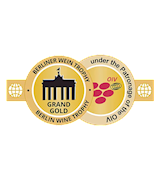
Berlin Wine Trophy - Grand Gold
2024
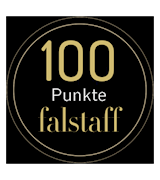
Falstaff - 100
BEST Weinlaubenhof Kracher Wines
Château d'Yquem is one of the most renowned wineries in the world, located in the Sauternes region of Bordeaux, France. It is famous for producing some of the finest sweet wines, particularly those made from the Sémillon and Sauvignon Blanc grape varieties.
The estate's wines are primarily known for their exceptional quality, complexity, and aging potential.
AWARDS

Berlin Wine Trophy - Grand Gold
2021, 2019

Falstaff - 99
BEST Château Rieussec Wines
AWARDS

Falstaff - 100

Falstaff - 99
AWARDS

Falstaff - 100

Falstaff - 99
AWARDS

Falstaff - 100
BEST Weingut Forstmeister Geltz-Zilliken Wines
AWARDS

Falstaff - 100

Falstaff - 99
BEST Weingut Peter Jakob Kühn Wines
Best Dessert Wines in the World
An exquisite dessert wine from Australia's De Bortoli family winery Picked late on the vine, the grapes’ natural sugars have been allowed to intensify, resulting in a golden hued wine boasting a delicate concentration of citrus, peach and apricot flavours that are both sumptuous and fresh.
Fabulous with sweet desserts, but try it with blue cheese for an inspired pairing. One of the most famed dessert wines.
AWARDS
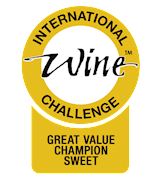
International Wine Challenge - IWC Great Value Champion Sweet 2023
2023
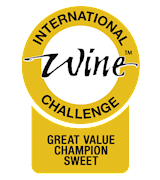
International Wine Challenge - IWC Great Value Champion Sweet 2020
2020
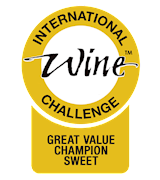
International Wine Challenge - IWC Great Value Champion Sweet 2019
2019
AWARDS

Berlin Wine Trophy - Grand Gold
2023
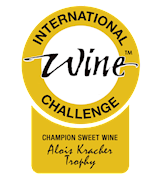
International Wine Challenge - IWC Champion Sweet Wine 2023 - Alois Kracher Trophy
2023
AWARDS

Berlin Wine Trophy - Grand Gold
2024

Falstaff - 100
AWARDS

Berlin Wine Trophy - Grand Gold
2022, 2019
Marks & Spencer Hermits Hill Botrytis Semillon is a rich dessert wine produced by De Bortoli Wines in the Riverina region of New South Wales, Australia. This wine is known for its lush, honeyed sweetness, which comes from the "noble rot" process, scientifically called botrytis.
The botrytis fungus naturally concentrates the grapes’ sugars and flavors, giving the wine complex notes of apricot, honey, and citrus zest with a luscious texture.
AWARDS
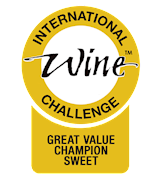
International Wine Challenge - IWC Great Value Champion Sweet 2017
2017
Morrisons The Best Botrytis Semillon is a luxurious dessert wine crafted by De Bortoli Wines in Australia’s Riverina region, known for producing exceptional botrytised wines. This wine is created from Semillon grapes affected by Botrytis cinerea (or "noble rot"), a natural process that intensifies the grape’s sweetness and flavors.
The result is a golden, lusciously sweet wine with flavors of apricot, honey, marmalade, and hints of citrus.
AWARDS
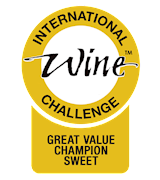
International Wine Challenge - IWC Great Value Champion Sweet 2021
2021
AWARDS

Falstaff - 100
The 2022 Riesling Kiedricher Gräfenberg Trockenbeerenauslese was harvested in late October and early November. It has the merest touch of dark fir honey, only a notion of darker fruit. The palate is lovely and barely shows botrytis at this exuberant stage of its life.
The sweetness is immense and speaks of candied peach, crystallized Mirabelle and intense citrus, think candied tangerine and orange peel. It's incisive, highly aromatic, lasting and oh-so pure. This is concentration, purity and excellence. Incredible and eternal.
AWARDS

Falstaff - 100
AWARDS

Falstaff - 100
Wine
Weingut Forstmeister Geltz-Zilliken 2021 »Goldkapsel« Saarburg Rausch Riesling Auslese Versteigerung AP 1-22
AWARDS

Falstaff - 100

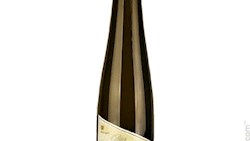
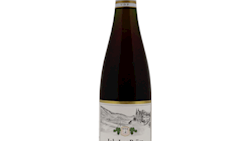

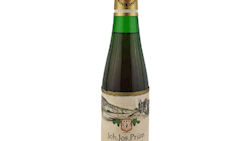

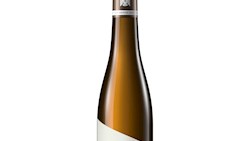
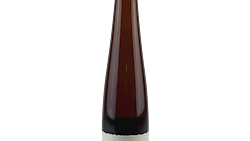
Hessische Staatsweingüter Kloster Eberbach 2015 Steinberger Riesling Trockenbeerenauslese Goldkapsel

Weingut Wwe. Dr. H. Thanisch – Erben Müller-Burggraef 1921 Bernkastel Doctor Riesling Trockenbeerenauslese

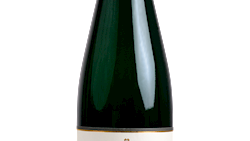
TasteAtlas food rankings are based on the ratings of the TasteAtlas audience, with a series of mechanisms that recognize real users and that ignore bot, nationalist or local patriotic ratings, and give additional value to the ratings of users that the system recognizes as knowledgeable. TasteAtlas Rankings should not be seen as the final global conclusion about food. Their purpose is to promote excellent local foods, instill pride in traditional dishes, and arouse curiosity about dishes you haven’t tried.





































































































